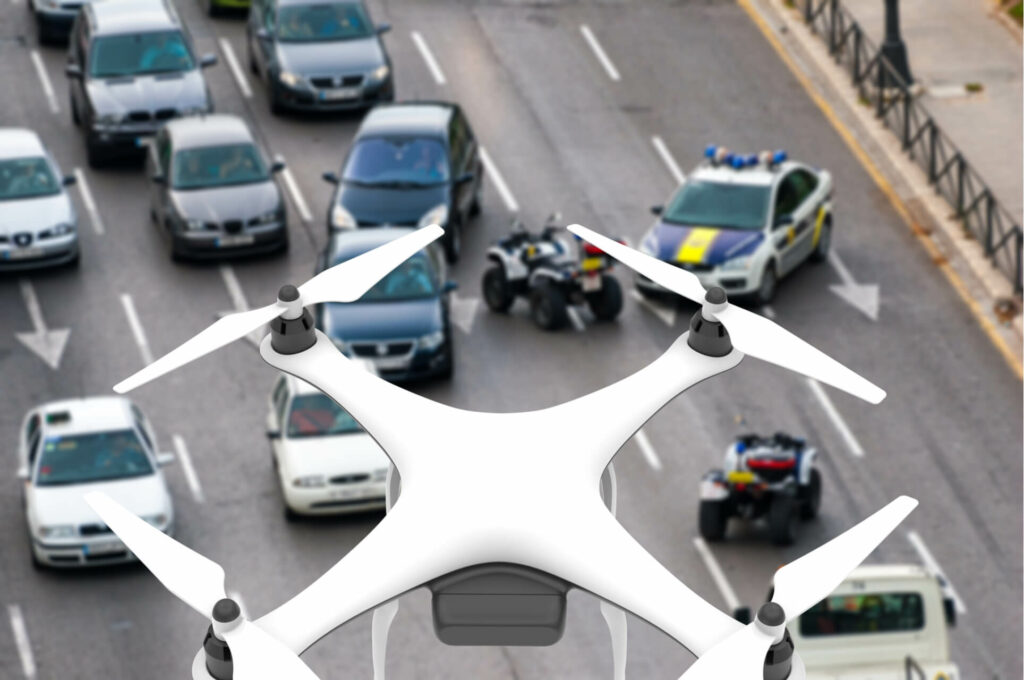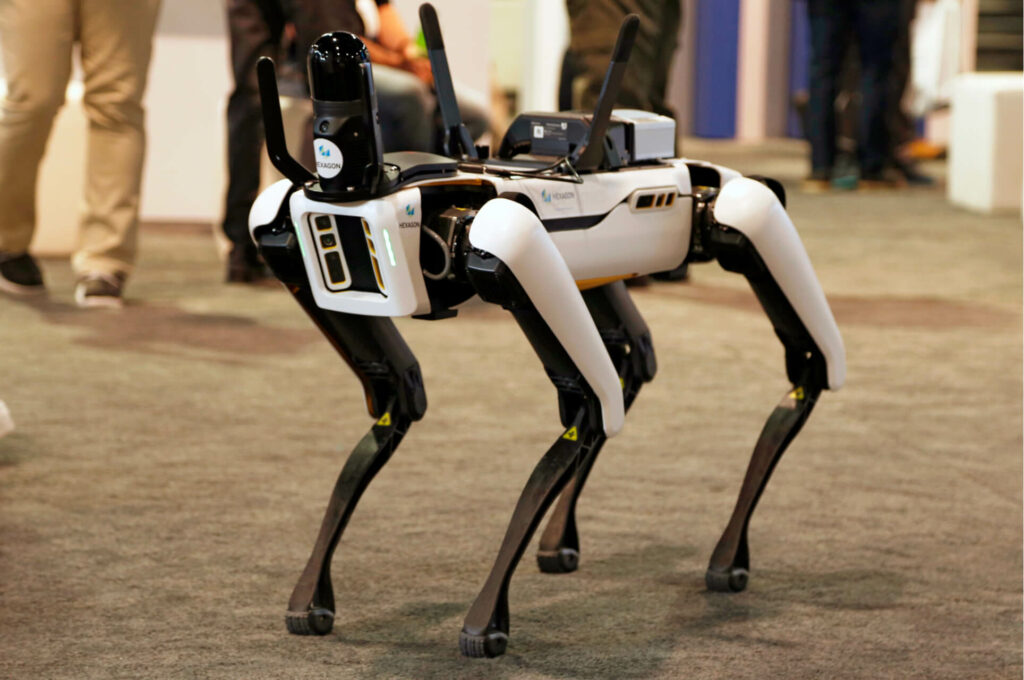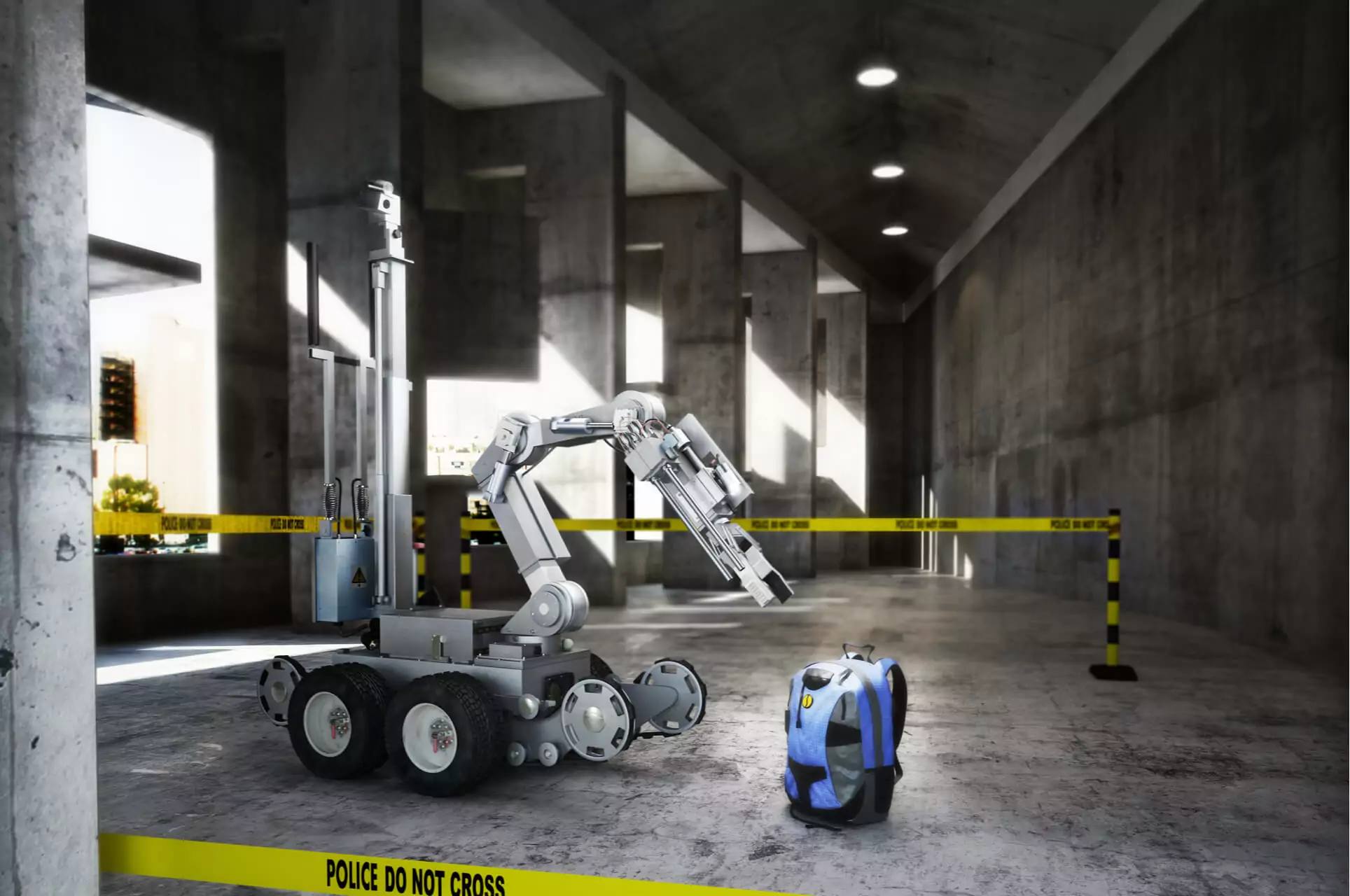It takes a lot of courage to work in law enforcement. It is a job where conflict is inevitable – as much as officers want to enforce the law, criminals don’t want to be caught. For better or worse, putting yourself in the middle of a potentially dangerous conflict is part of the job.
However, there is a difference between courage and recklessness, which is why officers have tools at their disposal to reduce the risk to themselves and others. While these have traditionally included weapons, protective equipment, and strategies that are taught in training, modern technology is now offering some revolutionary new tools.
New inventions, in the form of the latest generation of robots and drones, now have the ability to protect officers from dangerous situations. Once the stuff of science fiction, these are now being rolled out in departments around the country.
AUTONOMOUS DRONES

As autonomous law enforcement technology gradually becomes adopted across the country, we’re likely to start seeing UAVs, or unmanned aerial drones. Drone technology has advanced significantly in recent years, and we’re seeing more uses for both the mechanical drones themselves and the technology that drives them (infrared cameras, GPS and laser).
Chula Vista in California is one city that has already been trialing a “Drone as a First Responder” program. Dispatchers with the Chula Vista Police Department decide whether or not to fly a camera-mounted drone out to emergency calls. In approximately 25% of cases, the drone arrives ahead of police officers. According to Chula Vista’s police department, drones have been used in 5,400 incidents and played a role in more than 650 arrests.
Similarly, Louisville, Kentucky has been looking into a program to use UAVs to respond to the sound of gunfire. Louisville already has ShotSpotter sensors spread throughout the city, listening for gunshots. When such a noise is picked up, and interpreted by ShotSpotter’s analysts to be gunfire and not a similar sound, a notification is sent to police who can respond to the scene. The plan is to link a system to ShotSpotter to automatically route a UAV to the scene in order to capture an aerial view to help authorities find the person who fired the weapon.
POLICE ROBOTS
Police departments have tried introducing robots with varying results. One success story has been ‘Griffin’, a robot built by community college students and used by the Cleveland police department.
Standing only 12 inches tall, the six-wheeled rover is designed to go places police can’t fit, like under a car or behind dumpsters to look for explosives. Griffin is equipped with a camera and light, which allows police to scope out the situation from a monitor at a safe distance. The success of Griffin led to Ohio law enforcement requesting 40 robots from the federal 1033 program that transfers military equipment to local law enforcement.
Less successful was the “Digidog” deployed by the New York Police Department in December, 2020. The purpose of the Boston Dynamics robot, an agile 70-pound hound able to climb stairs and survey hazardous areas, was to help officers better identify dangers at crime scenes and keep officers safe. The main problem with the Digidog is that people find the way it looks and moves to be intensely disturbing. Then-Mayor Bill de Blasio said, “It’s creepy, alienating, and sends the wrong message to New Yorkers.”
After only a couple of months’ service, the Digidog was removed and the New York Police Department canceled a $94,000 contract with the robot’s maker Boston Dynamics. It seems the general public weren’t quite ready for this level of automized policing.
MAJOR ROADBLOCKS

While autonomous law enforcement technology is slowly but surely entering the field, there are several major roadblocks to its application. The first, as shown by the Digidog, is public perception. People aren’t necessarily ready to see these automated devices on our streets or in our skies, and still others are worried about privacy concerns.
As far back as March 2013, the American Civil Liberties Union (ACLU) published a written statement to the U.S. Senate Judiciary Committee advocating for the strengthening of current laws to ensure UAV technology will be used responsibly and within constitutional values.
Other roadblocks are more practical. Ground-based robots still have difficulties with stairs, uneven ground, and any number of obstacles that are common in urban environments. Flying drones, on the other hand, suffer from a fairly limited battery life, and are subject to strict FAA regulations regarding where and how high they can operate.
THE FUTURE OF AUTONOMOUS LAW ENFORCEMENT TECHNOLOGY
We may be slowly emerging into an age of autonomous law enforcement technology, but we’re clearly not quite there yet. It’s certain, though, that as the practical and social roadblocks are overcome by improved technology, we’ll see more and more applications in the future. It will be fascinating to see how these devices become integrated with current law enforcement practices as time goes on.

